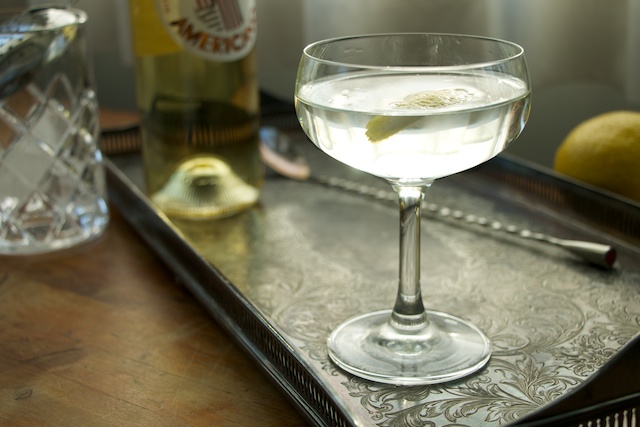
In this photo: Coupe, Mixing Glass, Bar Spoon, Julep Strainer
At first glance it seems like a brutish cocktail, perfectly appropriate for the “blunt instrument” of a character Ian Fleming had originally intended the character of James Bond to be. But just as Bond became a sophisticate as time went on, the Vesper reveals itself as a far more nuanced and balanced drink than it appears. The vodka mellows and stretches the potentially overwhelming portion of strong gin and the sweetness and quinine bite of the Lillet brings it all together. Because the Gordon’s and Lillet called for in the original recipe have both been reformulated since the Vesper’s appearance in 1953, a bit of alteration is in order. For the gin, a good London dry north of 80° works best. Lillet Blanc, a milder, sweeter version of the original Kina Lillet will still make a fine drink— but many argue that Cocchi Americano is a bit closer to the original mark, so that’s what we’re going with. Whatever you use, don’t forget the lemon twist— it makes a difference!
The Vesper
3 oz. gin
1 oz. vodka
1/2 oz. Cocchi Americano Bianco (or Lillet Blanc)
Twist of lemon
Although James Bond wants it shaken, try stirring this one with ice and straining into a glass. As for glassware, Bond intended to have a dry martini in a “deep champagne goblet” before changing his mind and coming up with this drink- we’ll assume that’s what the bartender ended up using for this one. Once poured, twist a generous swath of lemon peel over the drink, making sure to express the aromatic oils into the drink.



